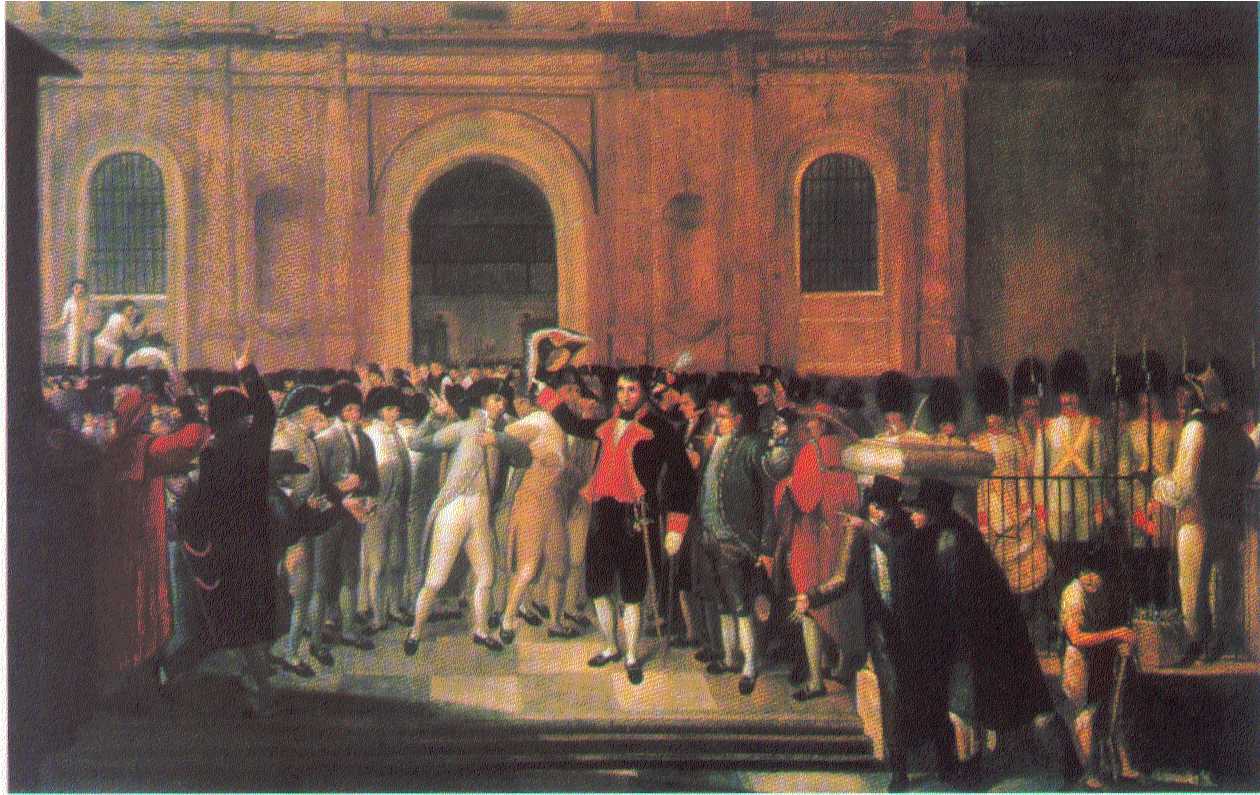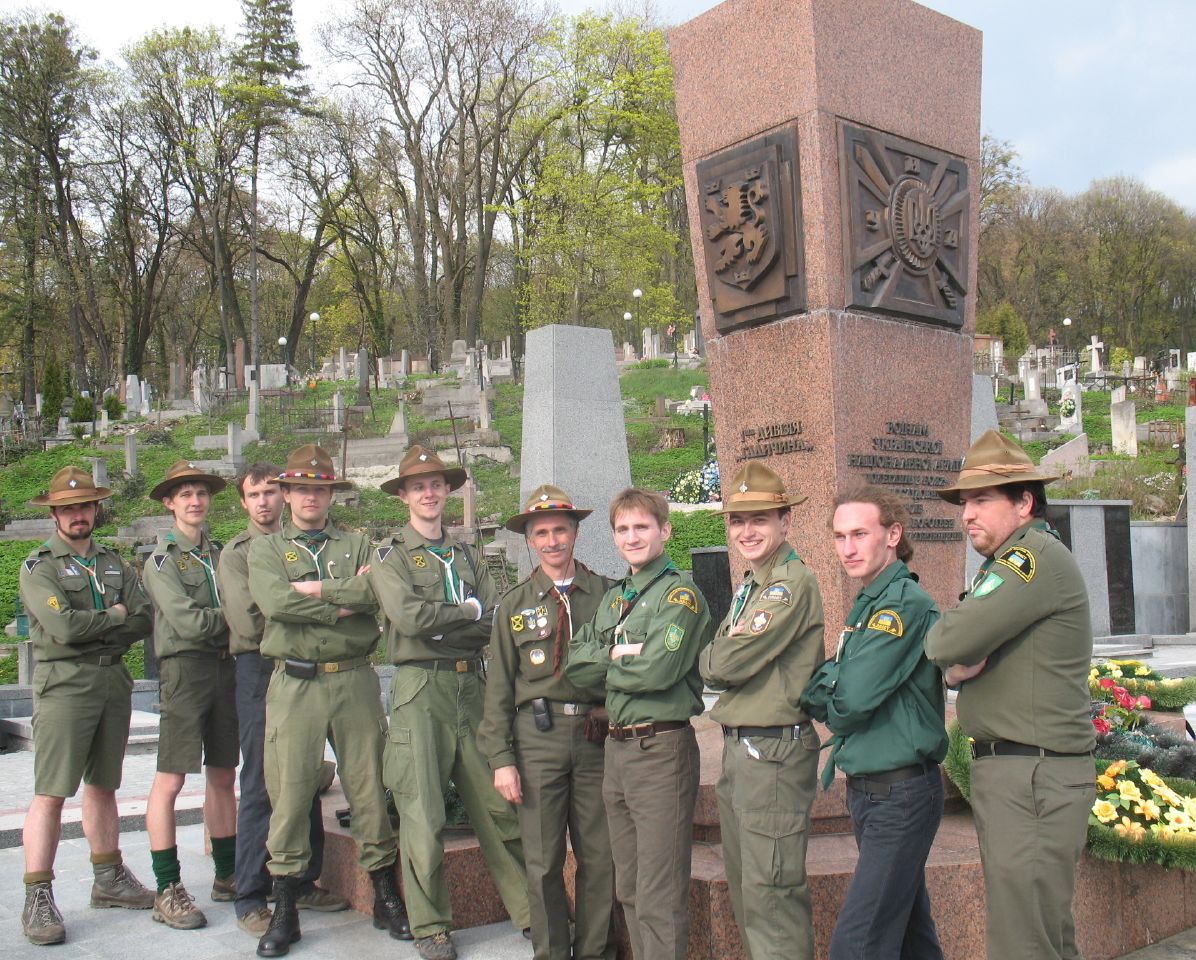|
Mieczysław Ludwik Potocki
Mieczysław Ludwik Potocki (1810, – 31 January 1878, Lviv) was Polish landowner, November insurgent, organizer of the conservation office in Eastern Galicia, member of the Galician States. Biography Mieczysław Ludwik Potocki was born in Lviv to an old, but not wealthy Polish noble family originating from the Bracław Voivodeship. His father was Franciszek Xawery Potocki from Wieniawa, a state counsellor, president of the prosecutor's office of the Congress Kingdom of Poland, and a member of the Warsaw Society of Friends of Learning, while his mother was Marianna Czerwińska, a daughter of a of Nowogródek (now Novogrudok). He studied law and administration at the Royal University of Warsaw. He participated in the November Uprising (he was awarded the Order of Virtuti Militari). After his stay abroad, he settled in his estate in the village of Kotsiubynchyky. An important event for his scientific interests was the discovery in 1848 of a statue of Zbruch Idol in the ... [...More Info...] [...Related Items...] OR: [Wikipedia] [Google] [Baidu] |
Lviv
Lviv ( or ; ; ; see #Names and symbols, below for other names) is the largest city in western Ukraine, as well as the List of cities in Ukraine, fifth-largest city in Ukraine, with a population of It serves as the administrative centre of Lviv Oblast and Lviv Raion, and is one of the main Ukrainian culture, cultural centres of Ukraine. Lviv also hosts the administration of Lviv urban hromada. It was named after Leo I of Galicia, the eldest son of Daniel of Galicia, Daniel, King of Ruthenia. Lviv (then Lwów) emerged as the centre of the historical regions of Red Ruthenia and Galicia (Eastern Europe), Galicia in the 14th century, superseding Halych, Chełm, Belz, and Przemyśl. It was the capital of the Kingdom of Galicia–Volhynia from 1272 to 1349, when it went to King Casimir III the Great of Kingdom of Poland, Poland in a Galicia–Volhynia Wars, war of succession. In 1356, Casimir the Great granted it town rights. From 1434, it was the regional capital of the Ruthenian ... [...More Info...] [...Related Items...] OR: [Wikipedia] [Google] [Baidu] |
Virtuti Militari
The War Order of Virtuti Militari (Latin: ''"For Military Virtue"'', ) is Poland's highest military decoration for heroism and courage in the face of the enemy at war. It was established in 1792 by the last King of Poland Stanislaus II of Poland, Stanislaus II Augustus and is the oldest Military awards and decorations, military decoration in the world still in use. It is awarded in five classes either for personal heroism or, to commanders, for leadership. Some of the heroic actions recognized by an award of the Virtuti Militari are equivalent to those meriting the Commonwealth of Nations, British Victoria Cross and the United States, American Medal of Honor. Soon after its introduction, however, the Polish–Lithuanian Commonwealth was destroyed in the partitions of Poland (1795), and the partitioning powers abolished the decoration and prohibited its wearing. Since then, the award has been reintroduced, renamed and banned several times, with its fate closely reflecting the Hist ... [...More Info...] [...Related Items...] OR: [Wikipedia] [Google] [Baidu] |
November Uprising Participants
November is the eleventh and penultimate month of the year in the Julian and Gregorian calendars. Its length is 30 days. November was the ninth month of the calendar of Romulus . November retained its name (from the Latin ''novem'' meaning "nine") when January and February were added to the Roman calendar. November is a month of late spring in the Southern Hemisphere and late autumn in the Northern Hemisphere. Therefore, November in the Southern Hemisphere is the seasonal equivalent of May in the Northern Hemisphere and vice versa. In Ancient Rome, Ludi Plebeii was held from November 4–17, Epulum Jovis was held on November 13 and Brumalia celebrations began on November 24. These dates do not correspond to the modern Gregorian calendar. November was referred to as Blōtmōnaþ by the Anglo-Saxons. Brumaire and Frimaire were the months on which November fell in the French Republican calendar. Astronomy November meteor showers include the Andromedids, which occurs fro ... [...More Info...] [...Related Items...] OR: [Wikipedia] [Google] [Baidu] |
University Of Warsaw Alumni
A university () is an institution of tertiary education and research which awards academic degrees in several academic disciplines. ''University'' is derived from the Latin phrase , which roughly means "community of teachers and scholars". Universities typically offer both undergraduate and postgraduate programs. The first universities in Europe were established by Catholic monks. The University of Bologna (), Italy, which was founded in 1088, is the first university in the sense of: *being a high degree-awarding institute. *using the word (which was coined at its foundation). *having independence from the ecclesiastic schools and issuing secular as well as non-secular degrees (with teaching conducted by both clergy and non-clergy): grammar, rhetoric, logic, theology, canon law and notarial law.Hunt Janin: "The university in medieval life, 1179–1499", McFarland, 2008, , p. 55f.de Ridder-Symoens, Hilde''A History of the University in Europe: Volume 1, Universities in the Midd ... [...More Info...] [...Related Items...] OR: [Wikipedia] [Google] [Baidu] |
People From Lviv
The term "the people" refers to the public or common mass of people of a polity. As such it is a concept of human rights law, international law as well as constitutional law, particularly used for claims of popular sovereignty. In contrast, a people is any plurality of persons considered as a whole. Used in politics and law, the term "a people" refers to the collective or community of an ethnic group or nation. Concepts Legal Chapter One, Article One of the Charter of the United Nations states that "peoples" have the right to self-determination. Though the mere status as peoples and the right to self-determination, as for example in the case of Indigenous peoples (''peoples'', as in all groups of indigenous people, not merely all indigenous persons as in ''indigenous people''), does not automatically provide for independent sovereignty and therefore secession. Indeed, judge Ivor Jennings identified the inherent problems in the right of "peoples" to self-determination, as i ... [...More Info...] [...Related Items...] OR: [Wikipedia] [Google] [Baidu] |
1878 Deaths
Events January * January 5 – Russo-Turkish War: Battle of Shipka Pass IV – Russian and Bulgarian forces defeat the Ottoman Empire. * January 9 – Umberto I becomes King of Italy. * January 17 – Russo-Turkish War: Battle of Philippopolis – Russian troops defeat the Ottoman Empire. * January 23 – Benjamin Disraeli orders the British fleet to the Dardanelles. * January 24 – Russian revolutionary Vera Zasulich shoots at Fyodor Trepov, Governor of Saint Petersburg. * January 28 – In the United States: ** The world's First Telephone Exchange begins commercial operation in New Haven, Connecticut. ** ''The Yale News'' becomes the first daily college newspaper in the U.S. * January 31 – Turkey agrees to an armistice at Adrianople. February * February 2 – Greece declares war on the Ottoman Empire. * February 7 – Pope Pius IX dies, after a 31½ year pontificate (the longest definitely confirmed). * February 8 &nd ... [...More Info...] [...Related Items...] OR: [Wikipedia] [Google] [Baidu] |
1810 Births
Events January–March * January 1 – Major-General Lachlan Macquarie officially becomes Governor of New South Wales. * January 4 – Australian Seal hunting, seal hunter Frederick Hasselborough discovers Campbell Island, New Zealand, Campbell Island, in the Subantarctic. * January 12 – The marriage of Napoleon and Joséphine de Beauharnais, Joséphine is annulled. * February 13 – After seizing Jaén, Spain, Jaén, Córdoba, Spain, Córdoba, Seville and Granada, Napoleonic troops enter Málaga under the command of General Horace Sebastiani. * February 17 – Napoleon, Napoleon Bonaparte decrees that Rome would become the second capital of the First French Empire, French Empire. * February 20 – County of Tyrol, Tyrolean rebel leader Andreas Hofer is executed. * March 11 – Napoleon marries Marie-Louise of Austria by proxy in Vienna. April–June * April 2 – Napoleon Bonaparte marries Marie Louise of Austria, Duchess of Parma, in person, in Paris. * April 19 � ... [...More Info...] [...Related Items...] OR: [Wikipedia] [Google] [Baidu] |
Lychakiv Cemetery
Lychakiv Cemetery (; ), officially State History and Culture Museum-Reserve "Lychakiv Cemetery" (), is a historic cemetery in Lviv, Ukraine. History Since its creation in 1787 as Łyczakowski Cemetery, it has been the main necropolis of the city's ( at the time named Lemberg) intelligentsia, middle and upper classes. Initially the cemetery was located on several hills in the borough of Lychakiv, following the imperial Austro-Hungarian (the city was located in Austria-Hungary at the time) edict ordering that all cemeteries be moved outside of the city limits. The original project was prepared by , the head of the Lviv University botanical garden. In mid-1850s the cemetery was expanded significantly by Tytus Tchórzewski, who created the present network of alleys and round-abouts. It then became the main city cemetery, and soon most other cemeteries were closed. The two largest that remained were the Yanivskiy Cemetery (), with many working class graves and the adjacent New Jewi ... [...More Info...] [...Related Items...] OR: [Wikipedia] [Google] [Baidu] |
Collegium Maius, Kraków
The Collegium Maius (Latin for "Great College") located in Kraków Old Town, Poland, is the Jagiellonian University's oldest building, dating back to the 14th century. It stands at the corner of ''ulica Jagiellońska'' (Jagiellon Street) and ''ulica Świętej Anny'' (St. Anne Street) near the Main Square of the historic city centre. Collegium Maius is the location of the Jagiellonian University Museum (), a registered museum established on the initiative of Prof. Karol Estreicher after meticulous restorations which lasted from 1949 through 1964, bringing the edifice back to its original look from before 1840.Jagiellonian University (2016)Muzeum Uniwersytetu Jagiellońskiego Collegium Maius./ref> History The then 36-year-old first university in Poland, known at the time as ''Akademia krakowska'' (), moved into the building some time in the 14th century after King Władysław II Jagiełło had purchased it as an educational grant with funds bequeathed by his late wife, Quee ... [...More Info...] [...Related Items...] OR: [Wikipedia] [Google] [Baidu] |
Lychkivtsi
Lychkivtsi () is a village in Husiatyn settlement hromada, Chortkiv Raion, Ternopil Oblast, Ukraine. History The first written mention is from 1427. In 1848, the Zbruch Idol was found on the right bank of the Zbruch, near Lychkivtsi.Олег СнітовськийТаємниці Збруцького ідола Укрінформ, 21.11.2018. Also, there are ruins of the castle (17th century). Religion * Saint Nicholas Church (1850, built of brick) * Church of the Immaculate Conception of the Virgin Mary (1706, restored in 1728) Notable residents * Tymon Zaborowski Tymon Zaborowski (1799–1828) was a Polish poet. He was influenced at the beginning of his writing career by classicism, then by Romanticism. He is also known, after one of his poems, as ("the Bard of the Honey Harvest"). Life Tymon Zaborowsk ... (1799–1828), Polish poet References {{Husiatyn settlement hromada Husiatyn settlement hromada Villages in Chortkiv Raion ... [...More Info...] [...Related Items...] OR: [Wikipedia] [Google] [Baidu] |
Zbruch
The Zbruch (; ) is a river in Western Ukraine, a left tributary of the Dniester.Збруч Zbruch is the namesake of the Zbruch idol, a sculpture of a Slavic deity (9th century) in the form of a column with a head with four faces, discovered in 1848 by the river. Description It flows within the starting from the Avratinian Upland. Upo ...[...More Info...] [...Related Items...] OR: [Wikipedia] [Google] [Baidu] |
Zbruch Idol
The Zbruch Idol, Sviatovid (''Worldseer'', ; ) is a 9th-century limestone sculpture idol, and one of the few monuments of pre-Christian Slavic beliefs (according to another interpretation, it was created by the Kipchaks/Cumans). The pillar was commonly incorrectly associated with the Slavic deity Svetovit, although current opinions on the exact meaning of all the bas-reliefs and their symbols differ. It is thought that the three tiers of bas-relief represent the three levels of the world, from the bottom underworld, to the middle mortal world and the uppermost, largest, world of heavenly gods. It is suggested that the sculpture was disposed of or was buried in a pit some time after the baptism of Kievan Rus', and acceptance of Christianity in Poland in 966, like various buried idols in Kyiv and Novgorod. In the 19th century, when the Zbruch River (a left tributary of the Dniester) changed its bed, the area where the pillar was buried became submerged. It was discovered durin ... [...More Info...] [...Related Items...] OR: [Wikipedia] [Google] [Baidu] |







